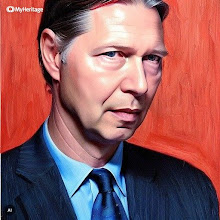Build Your Dreams
(Or: how a battery maker invented a better battery, kept the patent and became a car maker)
In the 2007 movie "Who killed the Electric Car" the response of the established car industry to the Californian "Clean Air Law", from the 1990's was investigated.
Under that legislation car manufacturers were obliged (or, to put it less politely, forced) to produce zero-emission vehicles, to keep the air free of pollutants.
Because car pollutants do not just contribute to climate change (which is today’s concern), but also cause lung diseases in the city centres. Lung diseases were the main concern in the 1990's.
General Motors in the 1990's was still the world's largest carmaker. They decided to build an electric car called Electric Vehicle 1 (EV1), to comply with the "Clean Air Law".
To give the electric car EV1 a better power source, a number of inventors were invited to compete to improve the heavy lead-acid type batteries of old.
One inventor submitted his design of a NiCad battery to GM, to put into the new electric car and won the competition.
He was very excited about it and took out an advertisement in a newspaper, boasting that his revolutionary new NiCad batteries were going to power the new electric car of General Motors.
GM bought his battery patent and got an injunction through its lawyers to forbid the inventor to talk to the press about the new batteries ever again.
When it was time to bring the new electric car to the market, GM installed the old, heavy, lead acid batteries of old, even though they already had the new NiCad's.
Unsurprisingly, the first motoring correspondents doing driving tests of the EV1 were happy with the car’s design, it's inbuilt air condition, acceleration and handling, but they remarked that the batteries were too weak and didn't provide enough driving range.
Indeed, for the first few years the EV1 cars had problems with failing lead-acid batteries.
Hence, the first customers were not as happy with their cars, as they could have been and the electric cars reputation was tarnished.
Two years later General Motors finally did introduce the new NiCad batteries into the EV1, which doubled its range. At about the same time GM sold the NiCad patent to the oil industry giant Shell.
In the years to follow, GM would not sell their EV1 electric cars directly to its customers; instead, it was only possible to lease them from the corporation. When the lobbying of the Oil industry finally succeeded in the year 2002 and the production of electric cars was no longer mandatory, General Motors had all EV1 cars repossessed and scrapped.
A last surviving EV1 was found in autumn 2008 in Canada (it was out of US jurisdiction for repossession) and sold at auction for 500.000 $, because of its rarity.
The patent holder for NiCad batteries, Shell, subsequently licensed the use of this type of battery for any use, except automotive applications. That is the reason that even though NiCad rechargeables are used in almost any application, you cannot buy NiCad car batteries, and instead heavy lead-acids are still used.
Moreover, no electric carmaker can use NiCads in their design, limiting the choice to lead-acid (low capacity) or Lithium-Ion (high price) instead.
The Automobile Crisis
It is February 2009, and we are still in the beginning of what many indicators identify as the worst economic crisis the world has ever seen.
General Motors made a name for itself as the creator of the Hummer and other gasoline-guzzling monster trucks, which nobody wants to buy anymore, because the fuel cost has become too high. GM and Chrysler are begging for Government loans, to delay the inevitable total bankruptcy caused by a wrong strategy.
No Alternative to an electric car
It was foreseeable for a long time that oil supplies would dwindle and petrol prices soar.
The car industry for the longest time tried to appease critics by pointing to their development of expensive hydrogen fuel cells.
The car industry has totally ignored the fact that the creation, transport and storage of the hydrogen in itself is such an inefficient process, that even the use of 200 year old lead-acid battery technology is more energy effective. (Hydrogen must be created using electricity, it is only an energy storage medium and not a fuel in itself).
Old fashioned Taxation System
China is for the first time the largest car market in the world.
Sold more cars than the USA in January.
Subscribe to:
Post Comments (Atom)





No comments:
Post a Comment